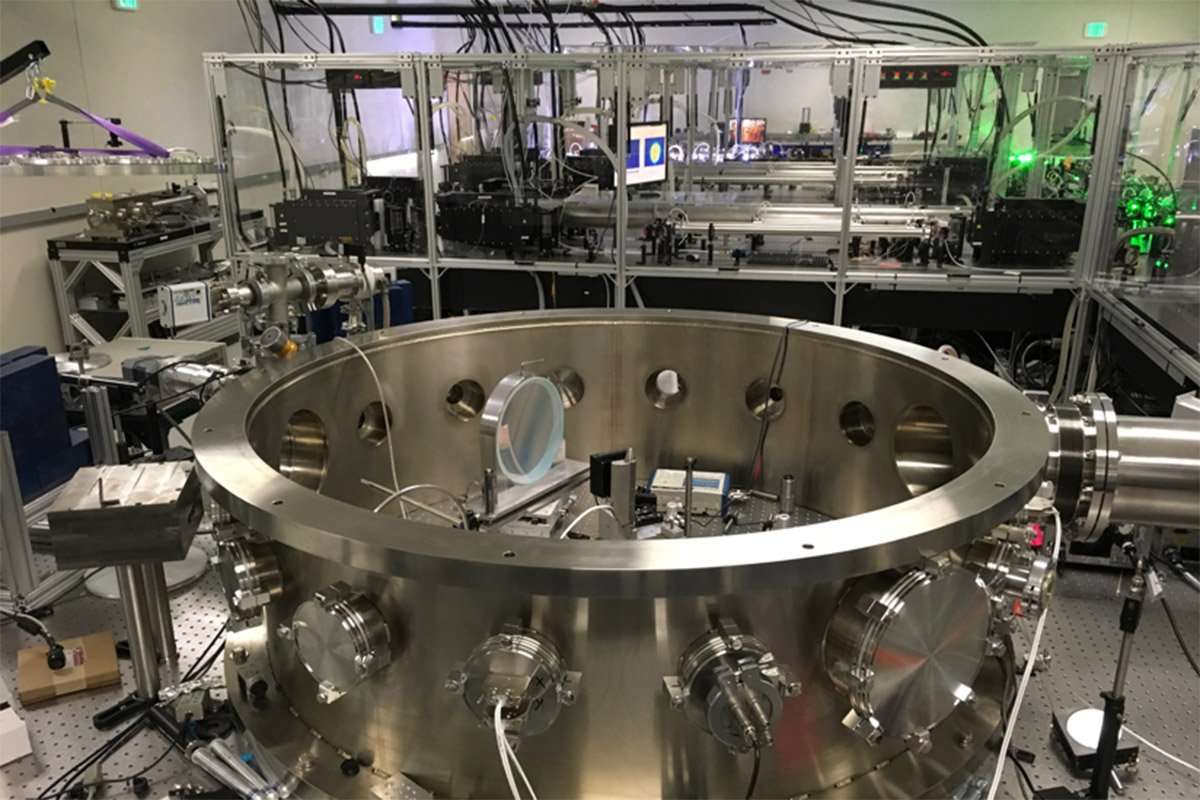Nuclear fusion, the process that powers our sun, happens when nuclear reactions between light elements produce heavier ones. It’s also happening – at a smaller scale – in a Colorado State University laboratory.
Using a compact but powerful laser to heat arrays of ordered nanowires, CSU scientists and collaborators have demonstrated micro-scale nuclear fusion in the lab. They have achieved record-setting efficiency for the generation of neutrons – chargeless sub-atomic particles resulting from the fusion process. Their work is detailed in a paper published in Nature Communications, and is led by Jorge Rocca, University Distinguished Professor in electrical and computer engineering and physics. The paper’s first author is Alden Curtis, a CSU graduate student.
Laser-driven controlled fusion experiments are typically done with multi-hundred-million-dollar lasers housed in stadium-sized buildings. Such experiments are usually geared toward harnessing fusion for clean energy applications.
In contrast, Rocca’s team of students, research scientists and collaborators work with an ultra-fast, high-powered tabletop laser they built from scratch. They use their fast, pulsed laser to irradiate a target of invisible wires and instantly create extremely hot, dense plasmas – with conditions approaching those inside the sun. These plasmas drive fusion reactions, giving off helium and flashes of energetic neutrons.
In their Nature Communications experiment, the team produced a record number of neutrons per unit of laser energy – about 500 times better than experiments that use conventional flat targets from the same material. Their laser’s target was an array of nanowires made out of a material called deuterated polyethylene. The material is similar to the widely used polyethylene plastic, but its common hydrogen atoms are substituted by deuterium, a heavier kind of hydrogen atom.
The efforts were supported by intensive computer simulations conducted at the University of Dusseldorf (Germany), and at CSU.
Making fusion neutrons efficiently, at a small scale, could lead to advances in neutron-based imaging, and neutron probes to gain insight on the structure and properties of materials. The results also contribute to understanding interactions of ultra-intense laser light with matter.
The paper is titled “Micro-scale fusion in dense relativistic nanowire array plasmas.” The research was supported by the Air Force Office of Scientific Research and by Mission Support Test Services, LLC.

julie-bug on March 16th, 2018 at 17:28 UTC »
Nice try, but I’m still not going to give the alumni association money.
Rishfee on March 16th, 2018 at 14:58 UTC »
Just to clarify for folks, this isn't about generating energy, it's about generating monoenergetic neutrons in pulses, which is useful in various research fields, just not energy production.
mvea on March 16th, 2018 at 11:39 UTC »
Journal Reference:
Alden Curtis, Chase Calvi, James Tinsley, Reed Hollinger, Vural Kaymak, Alexander Pukhov, Shoujun Wang, Alex Rockwood, Yong Wang, Vyacheslav N. Shlyaptsev, Jorge J. Rocca.
Micro-scale fusion in dense relativistic nanowire array plasmas.
Nature Communications, 2018; 9 (1)
DOI: 10.1038/s41467-018-03445-z
Link: https://www.nature.com/articles/s41467-018-03445-z
Abstract